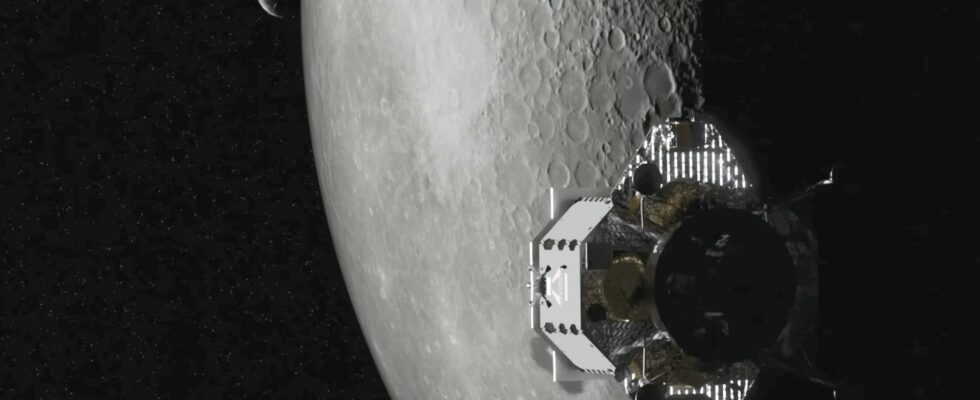The Peregrine lunar mission is experiencing its final moments. Astrobotic Technology and NASA plan for the probe to re-enter a safe zone. On the evening of January 18, 2024, Peregrine will burn up against the Earth’s atmosphere: where exactly?
Peregrine lives his last hours. The lunar mission will return to Earth to die there, this Thursday, January 18, 2024. While this private American mission supported by NASA was supposed to land on the Moon, this was not possible: Peregrine went wrong. Just after takeoff, the spacecraft suffered a leak, ruining any hopes of attempting a soft landing on the Moon.
In its latest status update, published on January 17, Astrobotic confirmed that Peregrine’s atmospheric reentry will occur in the evening, around 10 p.m. (French time). But the Earth is vast. Where exactly will the mission burn up against the Earth’s atmosphere? “ Astrobotic positioned the Peregrine spacecraft for a safe and controlled re-entry over a remote area of the South Pacific », Specifies the company.
This map shows where the Peregrine lunar mission will die
The re-entry trajectory is shown on this map shared by Astrobotic. We can distinguish an ellipse shown in red, to the north of New Zealand. If all goes well, Peregrine should burn against Earth’s atmosphere, just above this area.

In order to guarantee a safe atmospheric reentry, Astrobotic explains that the maneuver was carried out in two stages to modify Peregrine’s trajectory. The first consisted of turning on the main engines of the probe, with “ a series of very short firings “. The engines cannot function normally, due to Peregrine’s propulsion problem. The pauses between each pulse therefore made it possible to avoid overheating.
The second step consisted of adjusting the attitude of the ship (i.e. its orientation), in order to properly move Peregrine towards the southern Pacific Ocean. “ The procedures performed by the team were intended to minimize the risk of debris reaching land », Indicates Astrobotic. This intention is laudable: space debris is a huge problem, whether it falls uncontrollably back to Earth or remains in orbit and threatens the ISS.
Peregrine’s last day in space
What if we were on the Peregrine probe, as it approaches Earth, what would we see? This animation published on by Tony Dunn, amateur astronomer and specialist in orbit simulations of planets, comets, asteroids and other celestial bodies, shows what ” Peregrine’s last day “.
Despite this outcome carefully controlled by Astrobotic, it is a certainty, the mission is still missed. However, the fate of Peregrine does not concern NASA as much as one might have imagined. From 2024, other moonlanders will arrive in force to try to land on the Moon. Peregrine’s failure will inevitably serve as an experience for them.
Subscribe for free to Artificielles, our newsletter on AI, designed by AIs, verified by Numerama!
